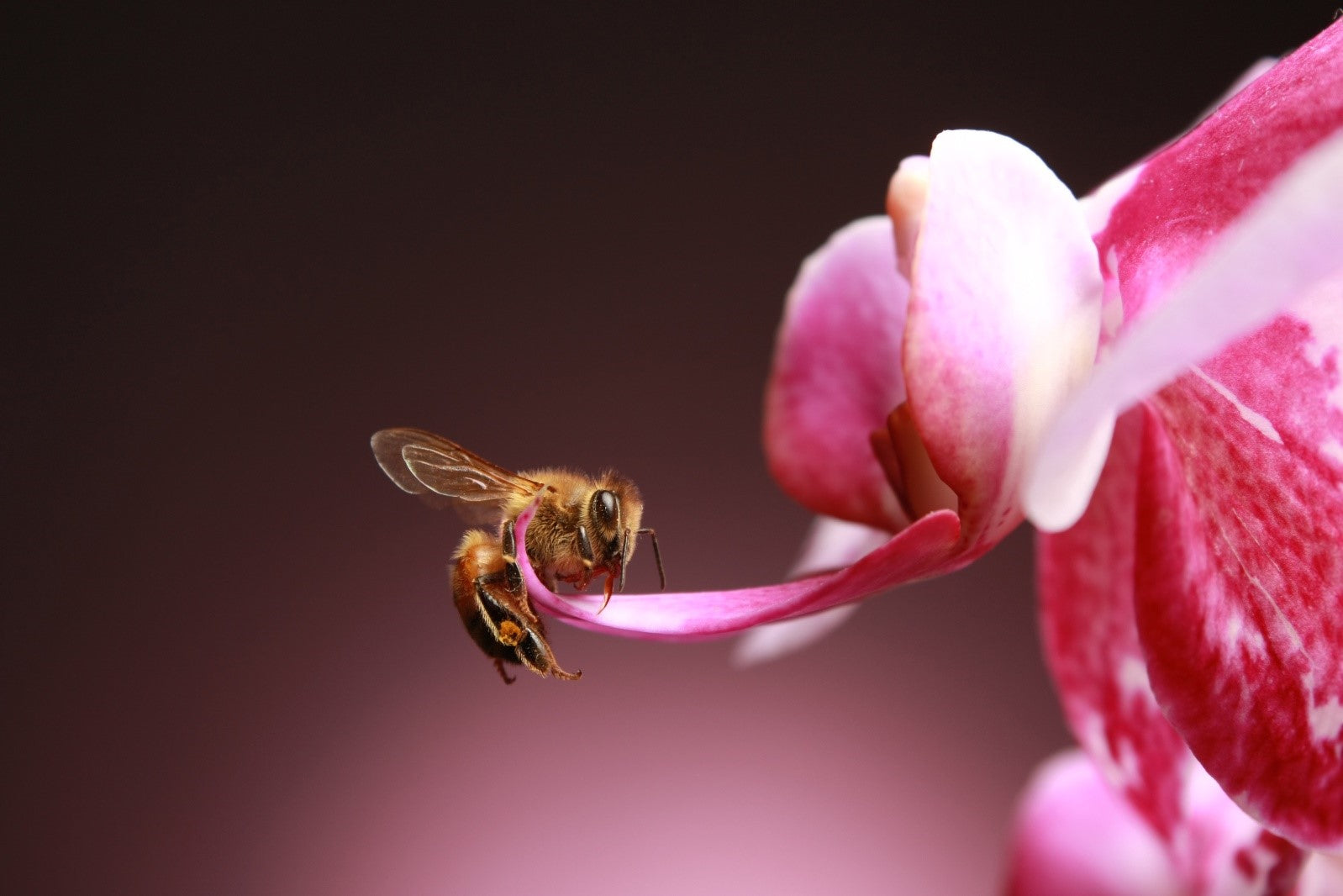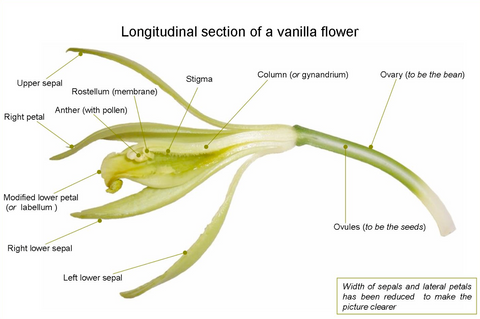To pollinate vanilla orchids, gently open the flower and use a small tool to transfer pollen from the anther to the stigma. Complete this process during the morning when the flowers are most receptive.
Vanilla orchids are unique and require specific care for successful pollination. Native to tropical regions, these orchids produce fragrant flowers that bloom for just one day. Natural pollinators, like certain bees, are often absent outside their native habitat, making manual pollination essential for growers.
Pollination is crucial for vanilla bean production, as each flower only yields a single bean. Understanding the pollination process enhances your chances of cultivating healthy plants and harvesting quality vanilla. With the right techniques, you can enjoy the satisfaction of growing this exotic orchid in your garden.

Credit: www.youtube.com
How to Pollinate Vanilla Orchids : Step by Step Guide
The Allure Of Vanilla Orchids
The allure of vanilla orchids captivates many with their beauty and fragrance. These unique plants produce the beloved vanilla bean. Understanding their unique nature helps in cultivating them successfully.
Vanilla orchids require specific conditions to thrive. They need warm temperatures and high humidity. Providing proper support for their growth is essential. These orchids often climb on trees or other structures.
| Key Factors | Description |
|---|---|
| Light | Indirect sunlight works best for vanilla orchids. |
| Water | Keep the soil moist, but avoid overwatering. |
| Fertilizer | Use a balanced fertilizer every month. |
Pollination is crucial for fruit production. Vanilla orchids are self-pollinating, but manual pollination increases yields. Using a small stick or tool, carefully transfer pollen from the anther to the stigma.
Pre-pollination Essentials
Understanding the anatomy of vanilla orchids is essential for successful pollination. Each flower has a column, which holds the pollen. The anther contains the pollen grains, while the stigma receives them. Recognizing these parts helps in the pollination process.
Optimal conditions for pollination include warmth and humidity. A temperature of around 75°F (24°C) is ideal. Humidity levels should be between 50% and 70% for best results. Pollinate during the morning when flowers are most receptive.
| Condition | Optimal Level |
|---|---|
| Temperature | 75°F (24°C) |
| Humidity | 50% – 70% |
| Time of Day | Morning |
Timing Is Key
Timing is very important for pollinating vanilla orchids. The flowers open in the morning. They last only one day. Pollination must happen on the same day. Identify the right moment by observing the flower closely.
The lifecycle of vanilla flowers includes three main stages:
| Stage | Description |
|---|---|
| Bud | The flower starts as a small bud. |
| Bloom | The flower opens and is ready for pollination. |
| Fruit | After successful pollination, the fruit develops. |
Watch the flowers daily to catch the right moment. Pollination can lead to fruit production. Successful pollination requires care and attention. This ensures healthy vanilla beans later.
Tools Of The Trade
To successfully pollinate vanilla orchids, the right tools are essential. Start with a small, sharp knife. This helps to gently open the flower. A pair of tweezers is also important. Use them to handle delicate parts of the flower.
Choose a clean, soft brush for transferring pollen. A cotton swab can work too. Always ensure your tools are free from dirt and chemicals.
Lastly, consider wearing gloves. This protects both your hands and the flowers. With the right equipment, pollination becomes easier and more effective.
The Pollination Process
Pollinating vanilla orchids is a careful process. First, choose a healthy flower. Wait until it opens fully. This usually happens in the morning.
Next, gently lift the lip of the flower. Locate the pollinia, which are the yellow parts. Use a small tool or your finger to press against the sticky stigma.
Make sure the pollinia touches the stigma. This helps the flower to set fruit. After pollination, check the flower daily.
Common mistakes include:
- Not pollinating at the right time.
- Using too much force during pollination.
- Forgetting to check for fruit development.
Post-pollination Care
After pollination, monitoring growth is very important. Check the orchids regularly for signs of new growth. Healthy roots and leaves indicate good progress. Use a moisture meter to help with watering. Overwatering can harm the plants.
Troubleshooting common issues helps ensure healthy orchids. Yellow leaves often mean too much water. On the other hand, brown tips may indicate underwatering. Pests like aphids can attack the flowers. Use insecticidal soap to treat these problems.
Maintain a consistent temperature for the best results. Ideal conditions range between 70°F and 85°F. Proper light is also essential; bright, indirect sunlight works best.
Maximizing Success Rates
Pollinating vanilla orchids requires careful attention to detail. Use a small stick or a toothpick to transfer pollen. Gently press the pollen onto the stigma. This helps the flower to fertilize.
Timing is crucial. Pollinate flowers early in the morning. This increases the chances of success. Flowers only remain open for one day. Act quickly for the best results.
Keep your orchids in a warm, humid environment. This helps the flowers stay healthy. Regularly check for signs of wilting or disease. Healthy plants are more likely to produce fruit.
Seeking expert advice can be very helpful. Experts can provide insights on specific techniques. They can also guide you on the best conditions for your orchids.

Credit: www.vanillabeankings.com
Beyond Pollination
Harvesting vanilla beans requires careful timing. Wait for about 8 to 9 months after pollination. Beans should turn yellow at the tip. Cut the beans off with clean scissors. Handle them gently to avoid damage.
Curing vanilla beans is essential for flavor. Start by blanching the beans in hot water. Then, wrap them in cloth and place them in a warm, dark place. Keep them in a sealed container for several weeks. This process enhances their aroma and taste.
For storing vanilla, keep beans in a cool, dark place. Use airtight containers to prevent moisture. Check them regularly for any signs of mold. Proper care ensures the vanilla stays fresh for a long time.

Credit: www.youtube.com
Frequently Asked Questions
How Do I Pollinate Vanilla Orchids?
To pollinate vanilla orchids, gently open the flower’s lip and locate the anther. Use a small tool or your finger to lift the anther and press it against the stigma. This mimics the natural pollination process, allowing for successful fertilization.
Be gentle to avoid damaging the delicate flower.
When Is The Best Time To Pollinate Vanilla Orchids?
The ideal time to pollinate vanilla orchids is in the morning. Flowers are most receptive in cooler temperatures and higher humidity. Pollination should occur when the flowers are fully open but not wilting. This ensures the best chance of successful fertilization and fruit development.
Can I Pollinate Vanilla Orchids By Hand?
Yes, hand pollination of vanilla orchids is effective. It allows you to ensure the flower is fertilized, especially in non-native regions. Using a small stick or your finger, carefully transfer pollen from the anther to the stigma. This method is necessary since vanilla orchids have a short blooming window.
How Long Does It Take For Vanilla Beans To Grow?
After successful pollination, vanilla beans take about 8 to 9 months to mature. The growth process requires patience and care during this time. Ensure the plant receives adequate water, sunlight, and nutrients. Harvesting too early will result in immature beans that lack flavor.
Conclusion
Successfully pollinating vanilla orchids is rewarding and essential for cultivation. With the right techniques, anyone can achieve this delicate process. Remember to be gentle and precise while handling the flowers. Your efforts can lead to beautiful, fragrant pods, enhancing both your garden and your culinary creations.
Happy pollinating!

